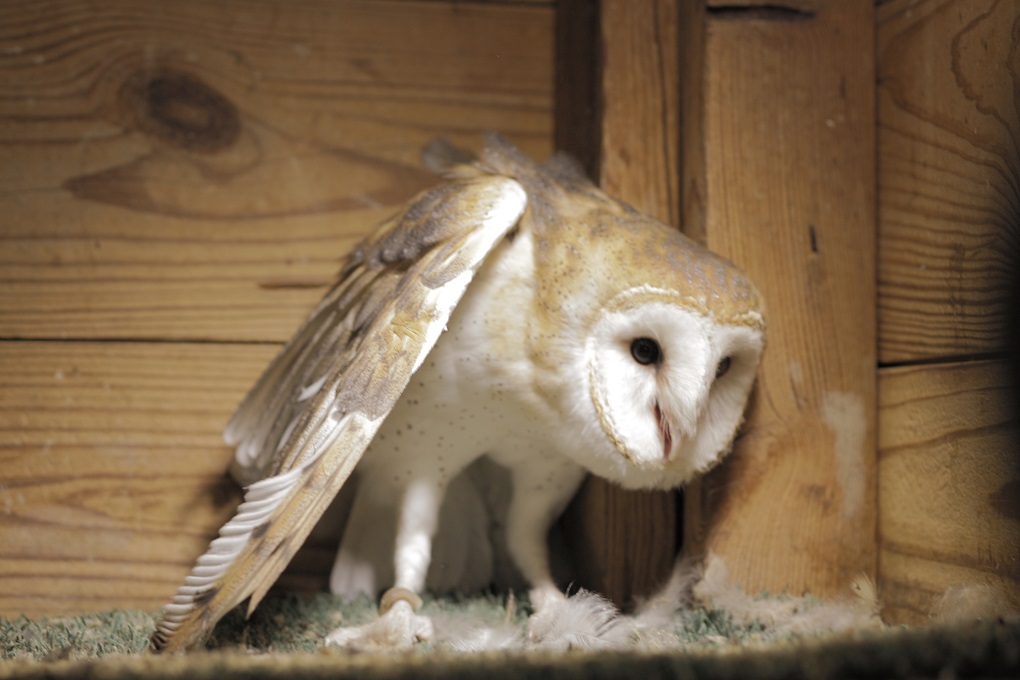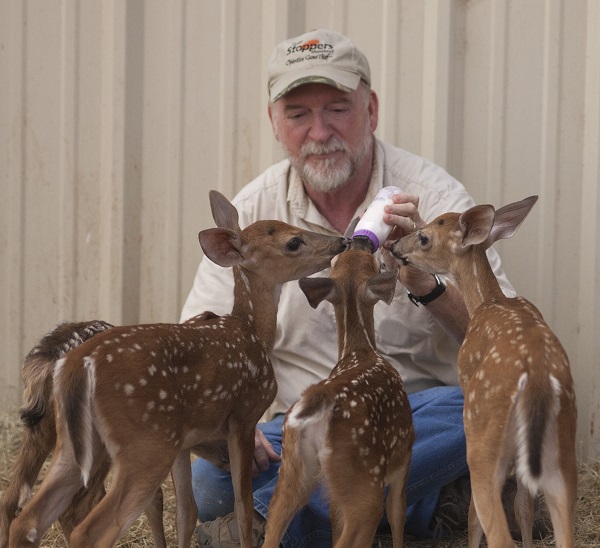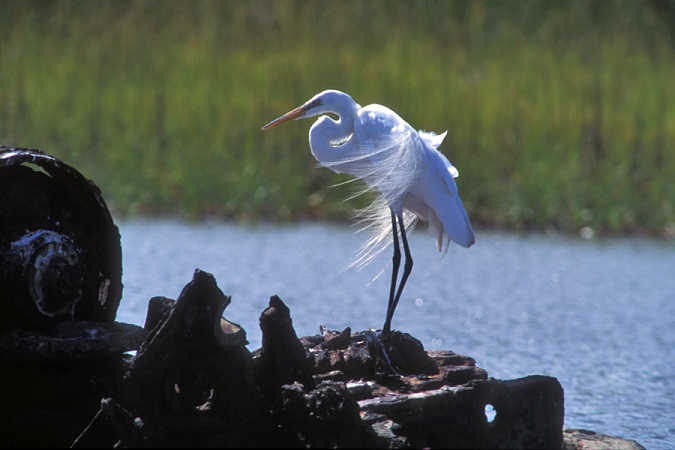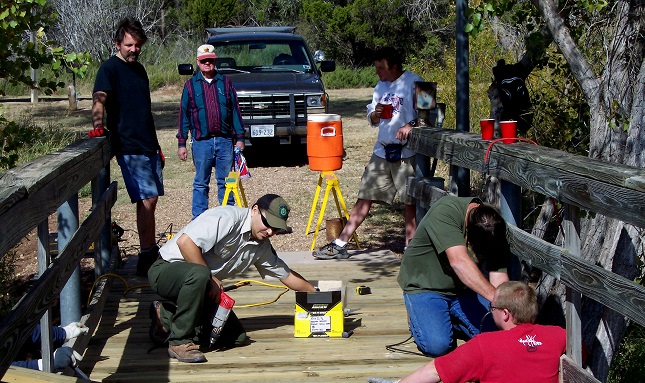April 10th, 2014

South Plains Wildlife Rehabilitation Center, Lubbock, TX.
This is Passport to Texas
You know the story of spring: reawakening, renewal, and baby animals. That last part – baby animals – can be tricky. You see, sometimes we find infant wildlife when we’re outdoors, and want to “rescue” them, which might actually be more like kidnapping.
08—For example, a baby dear [or fawn] will hide quiet and mama will almost always come back. That’s their strategy.
See what I mean. Jonah Evans is a mammalogist at Texas Parks and Wildlife; he says unless an animal is injured or clearly in distress, leave it alone, but monitor it at a safe distance if you’re concerned. Even then…
06— I recommend, before touching an animal, call a rehabilitator and ask them.
Licensed rehabilitators know animal behavior and can provide guidance, which may also include instructions to leave the animal alone because of legal considerations.
12—There are actually some regulations about possessing certain wildlife that you have to make sure you’re not violating. Possessing a non-game animal without a license, could be in violation of certain laws.
That can be avoided when you know who to call. Find a list of licensed wildlife rehabilitators—by county—on the Texas Parks and Wildlife website.
The Wildlife and Sport Fish Restoration Program supports our series and funds diverse conservation projects in Texas. For Texas Parks and Wildlife, I’m Cecilia Nasti.
Posted in Wildlife | Comments Off on Wildlife: Legality of Helping Wildlife
April 9th, 2014

TPWD staff photographer, Earl Nottingham, helps feed fawns
This is Passport to Texas
This time of year, reports start rolling in to Parks and Wildlife from people who think they’ve discovered abandoned baby animals.
09—What could have happened is you walked up there, and mama ran off and hid – and baby is hiding there. And, as soon as you leave, mama will come back.
That’s not true in every case, though, says Jonah Evans, Texas Parks and Wildlife mammalogist. If you see an abandoned baby possum, for example, mom could be gone for good.
14—With 184 some odd mammals in the state, it’s probably pretty difficult to give you a list of which mothers will come back wand which ones won’t. So, what I recommend is before touching and animal – call a [wildlife] rehabilitator.
Licensed rehabilitators know animal behavior and can tell you which critters may benefit from intervention.
09—If you contact one of the many throughout the state – and there’s a whole long list of them on our website – they are really the experts in this. Not Parks and Wildlife.
Jonah Evans says although—as a mammalogist—he researches and studies warm-blooded animals, rehabilitators are the ones with skills suited to helping citizens’ where abandoned baby animals are concerned.
Find a list of licensed rehabilitators by county on the Texas Parks and Wildlife website.
The Wildlife and Sport Fish Restoration Program supports our series…For Texas Parks and Wildlife, I’m Cecilia Nasti.
Posted in Wildlife | Comments Off on Wildlife: Baby Mammals
April 8th, 2014

Bird watching
This is Passport to Texas
If bird watching is your passion, consider sharing your sightings with the world on eBird…
03— That the Cornell lab of Ornithology sponsors.
Cliff Shackelford is Parks and Wildlife’s non-game ornithologist. With spring migration underway, who knows what you’ll see in the next few weeks.
26— And you can easily – on your smart phone or your computer – enter your sightings. You can even start with eBird by setting up your yard as a hotspot or a patch that you frequent. And it’s already in the system, and then all you have to do is you go and say, ‘Okay; it’s April 27th, and we had a black-throated green warbler, and two Tennessee warblers, and a chestnut sided warbler. And other people can see that and get pretty excited.
Of course if the hotspot is, say, your backyard, you may not want strangers walking up to your fence line with binoculars. You can be somewhat vague when inputting the location of your sighting, and still provide meaningful information to your fellow birding enthusiasts.
15— If you’re worried about people finding your secret patch, you can make it more of a broad brushstroke on the map, but still submit the data so people can say, ‘Wow. That was Travis County and they had all those great birds.’ So eBird is a real good tool.
Find a bunch of birding information on the Texas Parks and Wildlife website.
For Texas Parks and Wildlife…I’m Cecilia Nasti.
Posted in Birding | Comments Off on Birding: Share Sightings on eBird
April 7th, 2014

On Galveston Island
This is Passport to Texas
Before long you’ll see treetops dotted with color. Flowers? Nope. Feathers! Feathers of migrating bird species stopping over in Texas. To know what you’re seeing, you’ll need a good field guide.
17— There are so many really good field guides out there. I always like to recommend the ones that cover the whole country, because that way you just spend $20 or so, and you’ve got a book that’s great for any trip, when you go visit California to Florida to New York or here in Texas.
Cliff Shackelford is Parks and Wildlife’s non-game ornithologist.
26— So, I really like the National Geographic Society’s Field Guide to the Birds of North America. The Sibley guide is very good. The Roger Tory Petersen guide is very good. And the Golden Guide to Birds of North America. So, there’s really three or four. And the neat thing is, is to buy more than one; have one in the car, have one at home, and have one at the office. That way, you see different depictions of the birds, and then wherever you are that book is going to be at your fingertips.
Find birding information on the Texas Parks and Wildlife website.
10— We humans – we like to watch reality TV. You can have that experience out in your yard or at your local park, just looking to see what’s going on in the life of a bird.
For Texas Parks and Wildlife…I’m Cecilia Nasti.
Posted in Birding | Comments Off on Birding: Field Guides
April 4th, 2014

Volunteering is philanthropy.
This is Passport to Texas
The staff at the Texas Parks and Wildlife Foundation brings partners and donors together to fund meaningful projects in Texas.
09— Projects like the pronghorn restoration program that we’re partnering with the department and Borderland Research Institute out in West Texas.
Wildlife restoration and land acquisition are just two of the areas the Foundation focuses its fundraising. Anne Brown is Executive Director.
15— I think anytime these days when you have multiple partners who commit to a project identified as a priority and then help give the funds or raise the funds that signals to the donor that this is a project that’s important to a wide variety of conservation organizations.
Brown says the work of the Texas Parks and Wildlife speaks for itself and moves people to support the cause with philanthropic gifts.
20— The word philanthropy is so large; sometimes people think philanthropy and they only think of it as a big gift. And I always like to define philanthropy as you’re either giving of your time, your energy, or your resources. And that’s all philanthropy. A five dollar gift is philanthropy. A five million dollar gift is philanthropy. And the time that you spend with an organization is philanthropy.
Learn about the work of the Texas Parks and Wildlife Foundation in the April issue of Texas Parks and Wildlife magazine.
For Texas Parks and Wildlife, I’m Cecilia Nasti.
Posted in Land/Water Plan | Comments Off on Conservation: Everyone’s a Philanthropist







 Passport to Texas is a
Passport to Texas is a  Passport to Texas is made available by:
Passport to Texas is made available by: